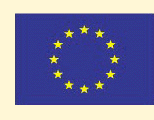
![]()
The Culture 2000 programme, voted into existence by the European Parliament and Council on 14 February 2000, is in fact the central culture support instrument of the EU.
Among the aims of the Culture 2000 programme are the promotion of cultural dialogue and the mutual exchange of information on the culture and history of European peoples. This important programme is also intended to provide a platform for interaction which focuses on the common cultural heritage of Europe. The activities in this field sponsored by the programme over the 2001 – 2002 period include initiatives to draw attention to the common European cultural heritage up to the 15th century, whether mobile or immobile, architectural or archaeological in nature. Expert restorers and scholars from three countries will work together, using both traditional and modern techniques, whereby particular care will be taken to ensure accessibility to the general public at all
times.
dialogue and the mutual exchange of information on the culture and history of European peoples. This important programme is also intended to provide a platform for interaction which focuses on the common cultural heritage of Europe. The activities in this field sponsored by the programme over the 2001 – 2002 period include initiatives to draw attention to the common European cultural heritage up to the 15th century, whether mobile or immobile, architectural or archaeological in nature. Expert restorers and scholars from three countries will work together, using both traditional and modern techniques, whereby particular care will be taken to ensure accessibility to the general public at all
times.
With its homepage “libri europae”, the project entitled “A future for the past” stands out as something special not only because it highlights the contribution of early printed works to our mobile cultural heritage, alongside architecture and works of art, but also because it makes use of today’s technical means to pursue this aim. In this way, the project meets the demands of those who call for more communication between scholars, experts and the public. The internet presentation is intended to complement the restoration of 45 important incunabula (15th c. printed works), which will thus be both preserved for posterity and displayed to the public in a virtual exhibition at the same time. It is hoped that this undertaking will spark off further initiatives aimed at preserving and publicizing that portion of European cultural heritage which is stored in printed form. By all accounts, it is a major task, requiring the close cooperation of the relevant public authorities, foundations, and private sponsors.